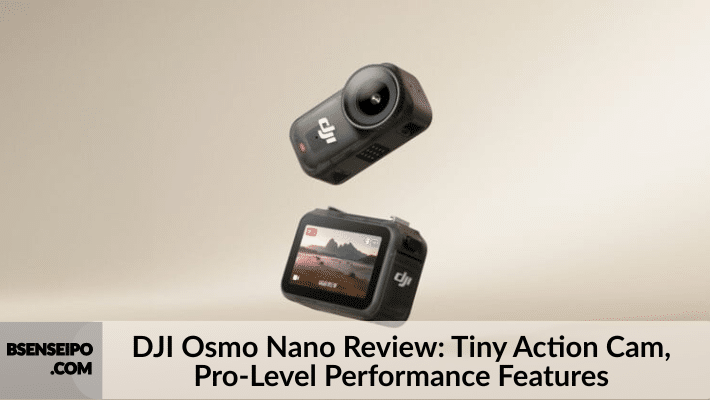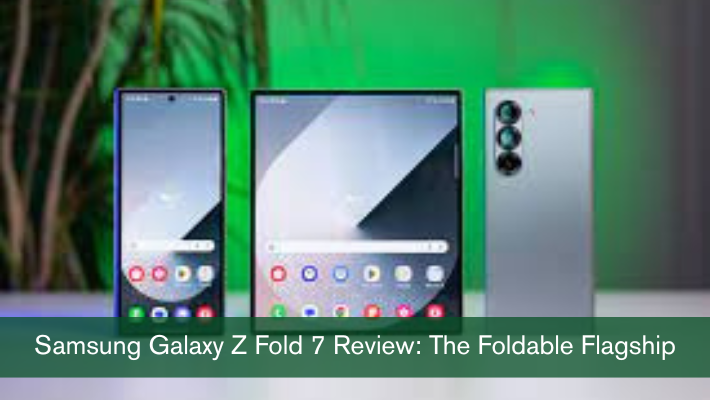DJI Osmo Nano Review: The Tiny Camera That Redefines Wearable Video
The action camera market has been a battleground for years, but with the new DJI Osmo Nano, DJI has delivered a truly innovative product that stands out in the “wearable camera” category. Launched on September 23, 2025, the Osmo Nano is an ultracompact, modular camera designed to be clipped onto anything, from a backpack strap to a hat, offering a hands-free, first-person perspective that’s perfect for vlogging, sports, and casual everyday adventures.
DJI Osmo Nano Design & Modularity
The Osmo Nano’s most compelling feature is its two-part modular design. The camera module itself is a feather-light 52 grams (1.83 ounces) and is fully waterproof down to 10 meters (33 feet). This tiny unit is the true star of the show, equipped with a powerful magnetic base that makes it easy to snap onto a variety of mounts, including a magnetic hat clip, a lanyard, or a head strap, all included in the standard combo.
The second half of the system is the “Multifunctional Vision Dock.” This accessory houses a 1.96-inch OLED touchscreen, a larger battery, and a microSD card slot for expandable storage. The camera unit magnetically attaches to this dock, allowing it to function as a traditional action camera. This modularity is a game-changer, giving creators the flexibility to use the camera as a standalone wearable or to frame shots and review footage with the dock’s display.
DJI Osmo Nano Image & Video Quality
Despite its minuscule size, the Osmo Nano is a powerhouse when it comes to image quality. It features a new 1/1.3-inch sensor, which is notably larger than many of its rivals, giving it a significant edge in low-light performance and dynamic range (up to 13.5 stops). The camera can record video in up to 4K at 60fps and an impressive 4K at 120fps for cinematic slow-motion shots. For professional creators, the inclusion of 10-bit color and D-Log M profiles is a major selling point, providing immense flexibility for color grading in post-production.
DJI’s acclaimed stabilization technology, RockSteady 3.0, is also on board, ensuring that even shaky, action-packed footage remains smooth and stable. The HorizonBalancing feature further corrects horizontal tilt, making it easier to capture level shots on the move.
DJI Osmo Nano Features & Usability
Beyond its core specs, the Osmo Nano is packed with smart features. The magnetic dock can fast-charge the camera to 80% in just 20 minutes, and the combined battery life with the dock is a generous 200 minutes of recording time. Audio quality is solid, and the camera is a perfect companion to DJI’s wireless microphone systems, as it can connect directly without a separate receiver.
For hands-free operation, the camera supports gesture controls, allowing you to start recording with a simple nod or hand motion. The DJI Mimo app provides a live feed and intuitive editing tools, though some reviewers have noted the app is less streamlined than competitors.
-
Gesture Controls – Start recording or take selfies with simple hand gestures.
-
ActiveTrack – Locks onto a subject and keeps it centered in the frame.
-
Quick Switch Modes – Easily switch between portrait and landscape for TikTok, YouTube, or Instagram.
-
DJI Mimo App Integration – Offers advanced shooting modes like timelapse, hyperlapse, and panorama.
-
Built-in Controls – Simple joystick and buttons for zoom, tilt, and record.

(DJI Osmo Nano: Ultra-Light Wearable Camera)
Battery Life
The DJI Osmo Nano offers up to 8–10 hours of battery life, depending on usage. It charges via USB-C, which makes it convenient for modern setups. For day-long shoots, the Nano comfortably lasts without frequent recharges.
Price & Availability
The DJI Osmo Nano is positioned as an entry-level stabilizer, making it one of the most budget-friendly options in DJI’s lineup. Prices vary by region but generally fall around $99–129 (₹8,000–11,000 in India), making it accessible for beginners and hobbyists.
DJI Osmo Nano vs DJI Osmo Mobile
-
Size & Portability: Nano is lighter and smaller, while the Mobile series is bulkier but more powerful.
-
Features: Osmo Mobile offers advanced pro-level features, while Nano focuses on simplicity.
-
Price: Nano is cheaper, making it ideal for beginners and casual vloggers.
Final Verdict: Should You Buy the DJI Osmo Nano?
The DJI Osmo Nano is a bold and successful entry into the world of ultracompact action cameras. It cleverly addresses the needs of creators who want a high-quality, hands-free solution without sacrificing professional features. While the dock is only splash-proof and the small screen can be a bit of a challenge, the camera’s superb image quality, powerful feature set, and truly wearable design make it an excellent choice for vloggers, travelers, and anyone looking to capture their life’s moments from a fresh, immersive perspective.
If you’re a vlogger, traveler, or casual creator looking for an affordable and highly portable gimbal, the DJI Osmo Nano is a fantastic choice. While professionals may prefer the DJI Osmo Mobile series for more advanced features, the Nano strikes the perfect balance between price, performance, and portability.
For anyone who wants smooth, cinematic smartphone footage without carrying bulky gear, the Osmo Nano is one of the best buys in 2025.




